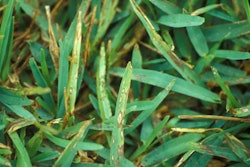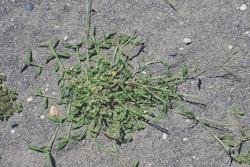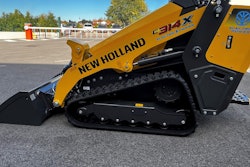Theories abound when it comes to plant growth regulators (PGRs). Some landscape managers will tell you that they couldn’t survive without them, while others are quick to question their relevance in the residential lawn and landscape market. To the landscape manager who is in charge of large properties, commercial sites and sports fields, PGRs can be a real labor-saver. But for someone whose business revolves around smaller, residential properties and prices his contracts on a per-mow or per-hour basis, using PGRs on turf could be counteractive to increasing revenue.
Regardless of where you stand on the subject, there is no denying that PGRs are effective tools for reducing the maintenance required for turfgrass and ornamentals, which can be critical during the busy season or the peak spring growing season. They also make turf easier to mow, and cut down on the clipping volume, which can be significant to landscapers who have to double mow or bag and haul the clippings. Some research suggests that using PGRs can reduce the costs of labor-intensive tasks (mowing, trimming, cleanup and hauling) by 50 percent or more. And that percentage is undoubtedly growing, given the recent climb in fuel prices.
Creative, innovative and safe
PGRs are organic compounds, either synthesized in the plant or as an applied substance, that in very low concentrations can either increase or decrease plant growth (Cornell, 2008). Initial PGR products were developed with the intention of slowing turf growth and suppressing seedheads, mainly on roadsides and areas where suppression was more important than aesthetics or quality of turf. Through the years, what began as an effort to suppress turfgrass growth and reduce mowing has evolved into something more. Today’s PGRs not only work to slow down growth in turf and ornamentals, but also have proven to boost plant vigor, enhance color and even result in increasing stress tolerance and root development.
Turf managers are using PGRs in many innovative ways: as “chemical edgers” around trees, walkways and landscape fixtures to save valuable trimming time; to eliminate tall seedheads, on steep embankments or areas with a lot of vehicle traffic where mowing poses a danger to your crew; and to suppress turf growth during overseeding in an attempt to offer young seedlings a head start. On the ornamental side, turf managers commonly use PGRs on trees to slow the production of messy – and often hazardous when it falls – fruit.
Calculate the costs
To decide if PGR’s are right for you and your business, calculate labor and fuel savings (don’t forget to add in what driving to and from the property will cost) and weigh it against what an application of PGR would cost. PGRs are somewhat pricey, so try to get your numbers as accurate as possible. If you’re using PGRs simply to enhance the vigor of turf and ornamentals or to boost establishment during overseeding, it may be harder to quantify the benefits in dollars and cents and you’ll need to make a judgment call.
Follow these tips to get started:
- Experiment on a small area of turf on a low-profile area of the property.
- Make sure to use PGRs in conjunction with an herbicide program. PGRs do not suppress the growth of weeds, and if you’re not using herbicides, you’ll be giving weeds a competitive advantage over turf.
- Don’t scalp your turf before applying PGRs, and be sure to remove clippings and debris from turf. The chemical needs to make contact with the grass to be absorbed.
- Don’t irrigate for at least eight hours after applying a PGR.
- Wait to mow for three days after a PGR application.
For a list of current PGRs labeled for use on turf and ornamentals, open the Chemical Specification Guide on the TLC Web site at www.randallpub.com/tlc/TLC_plant_growth_regulations.pdf or see the April 2008 issue of Total Landscape Care.











